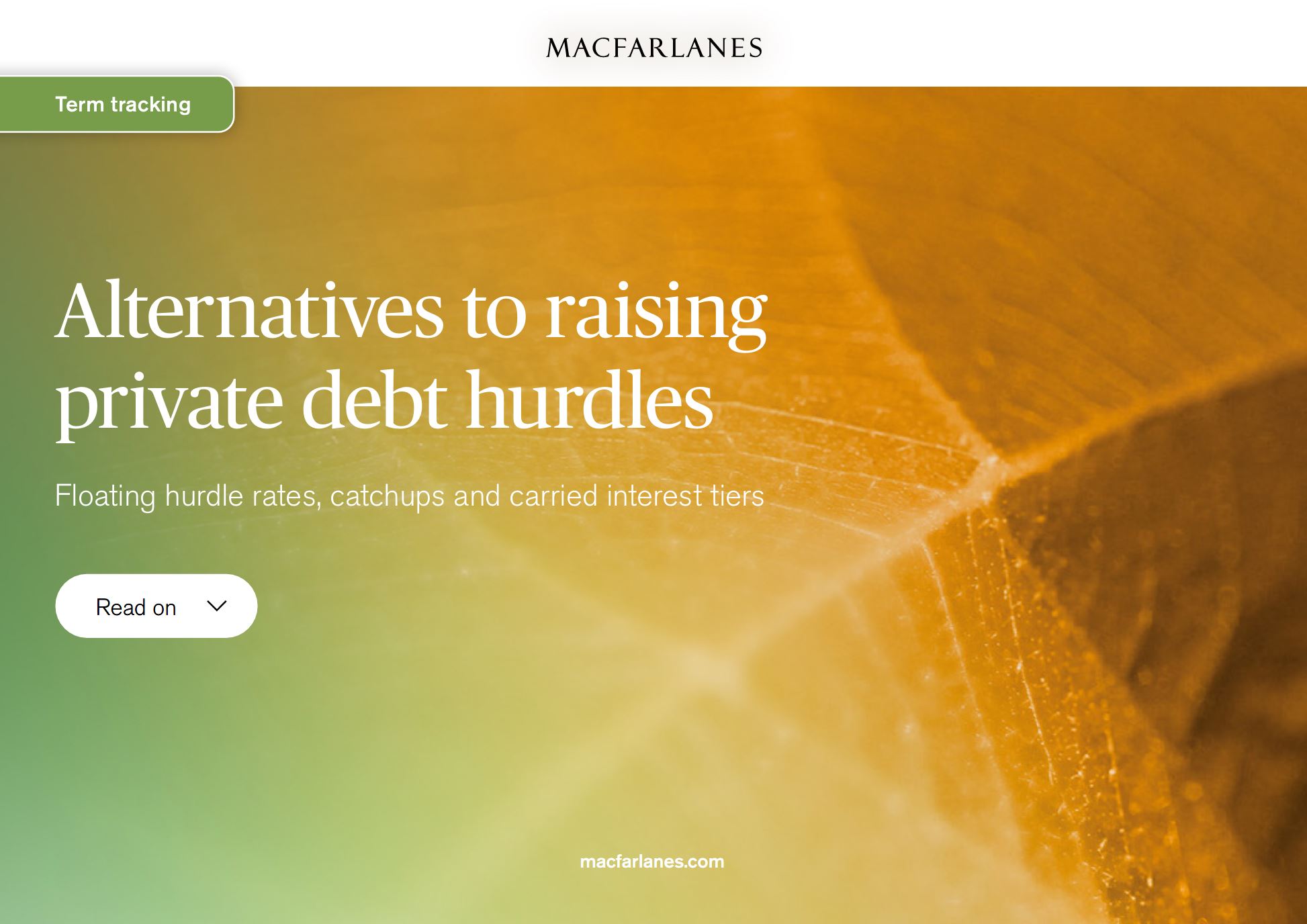Alternatives to raising private debt hurdles - part two
26 September 2023This year we have witnessed a significant rise in interest rates to levels not seen since 2009. In turn, the appropriateness of current private debt hurdle rates is under question as investors view them as “too achievable”. With private debt managers feeling pressure to increase hurdles, we explore alternative options, including floating hurdle rates, catchups and carried interest tiers.
This article is the second part of a two-article series on private debt hurdle rates.
Part one provided the background on hurdles and explored the arguments for and against increasing them. Catch up on part one: Are private debt hurdles rising?
In part two, we explore alternative options to raising hurdles that seek to address investor concerns and maintain alignment between GPs and LPs.
Floating hurdle rates
Typically hurdle rates in private debt funds have a fixed percentage (e.g. 5%). Given that most private debt funds lend on a floating rate basis, a floating hurdle rate may be better suited to align the GP incentive with the underlying assets.
A floating hurdle rate varies according to a reference rate guaranteeing that the manager is not being compensated solely due to a market-wide rise in interest rates. Because the objective is to align performance compensation to underlying instruments, the reference rate used for the hurdle should be consistent with the fund’s underlying loans and consider the market/geography and the currency most relevant for the fund’s strategy. This implies that determining an appropriate reference rate is more challenging for funds with a greater global focus. A margin, also known as spread, would also typically be added to the reference rate. As with fixed hurdles, floating hurdles can be compounded annually in arrears based on the previous year’s average reference rate. The challenge however is in determining the margin over the reference rate.
Get in touch



